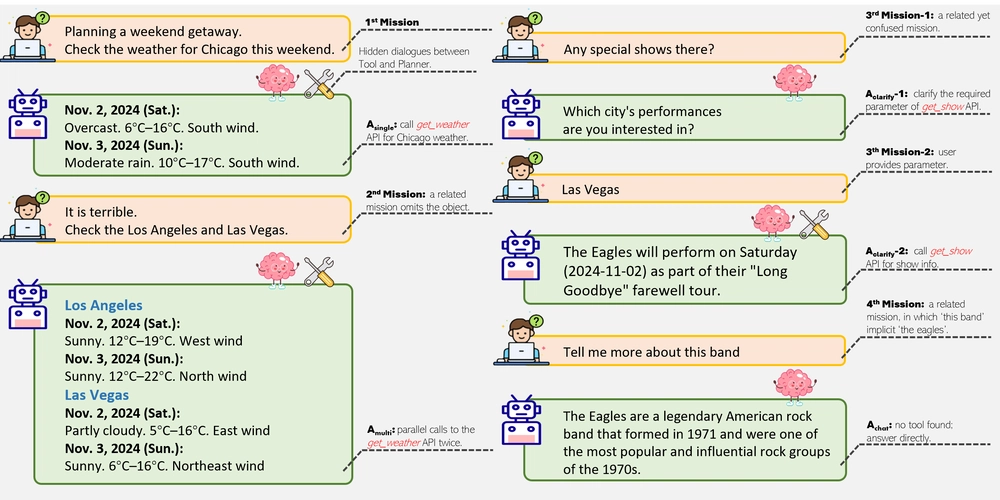What is DMARC? Definition, Purpose, and How It Works
In today’s digital world, email remains one of the most widely used methods of communication — and unfortunately, also one of the most commonly exploited by cybercriminals. From phishing attacks to email spoofing, bad actors often use deceptive tactics to trick users into revealing sensitive information. That’s where DMARC comes in. DMARC, short for Domain-based Message Authentication, Reporting, and Conformance, is an essential email authentication protocol that helps protect domains from unauthorized use, especially spoofing. In simple terms, it allows domain owners to control who can send emails on behalf of their domain and provides a mechanism for receiving reports about fraudulent email activity. In this post, we’ll dive into the definition of DMARC, how it works, and why it’s critical for businesses and organizations to implement it. DMARC Definition DMARC is an email authentication protocol designed to give email domain owners the ability to protect their domain from unauthorized use. It builds on two existing mechanisms: SPF (Sender Policy Framework) and DKIM (DomainKeys Identified Mail). While SPF and DKIM individually help authenticate email sources, DMARC adds an additional layer of policy and reporting. Essentially, DMARC instructs email servers what to do when incoming messages fail SPF or DKIM checks — for example, whether to reject, quarantine, or allow the messages to pass through. In short, DMARC = SPF + DKIM + policy enforcement + reporting. How Does DMARC Work? To understand how DMARC works, it's important to briefly cover how SPF and DKIM function: SPF (Sender Policy Framework) helps domain owners specify which IP addresses are authorized to send emails on behalf of their domain. If an email comes from an unauthorized server, it fails the SPF check. DKIM allows senders to attach a digital signature to each message, which recipients can verify using a public key in DNS records. This confirms that the message wasn’t altered during transit. DMARC takes both of these mechanisms and adds a policy framework and reporting structure. Here's how it functions: Policy Declaration: Domain owners publish a DMARC record in their domain's DNS settings. This record specifies what actions to take if a message fails SPF and/or DKIM (none, quarantine, or reject), and where to send reports. Alignment Check: DMARC checks that the domain in the "From" header aligns with the domains used in SPF and DKIM. This alignment is crucial for preventing spoofing. Enforcement Action: Based on the domain’s DMARC policy, the receiving mail server takes appropriate action. If the message fails DMARC and the policy is set to "reject," the message is blocked. If it's set to "quarantine," it may go to the spam folder. Reporting: DMARC provides feedback through aggregate and forensic reports sent to email addresses specified in the DMARC record. These reports help domain owners monitor and adjust their email authentication strategies. Why Is DMARC Important? DMARC plays a crucial role in enhancing email security and protecting both senders and recipients from cyber threats. Here are some of the key benefits: Prevents Email Spoofing Spoofing occurs when a malicious actor sends an email that appears to come from a trusted source. DMARC helps prevent this by ensuring that only authorized servers can send emails on behalf of your domain. Improves Brand Trust By implementing DMARC, businesses show email providers and recipients that they take email security seriously. This can improve deliverability and protect the brand’s reputation. Reduces Phishing Attacks DMARC stops unauthorized senders from using your domain to send phishing emails. This protects your customers, partners, and employees from falling for scams that appear to be from your brand. Gives Visibility into Email Ecosystem DMARC reports provide valuable insight into who is sending emails on your behalf and whether they’re passing or failing authentication. This visibility helps organizations fine-tune their authentication strategy. Final Thoughts DMARC is a vital component of modern email security. It empowers domain owners to protect their domains, users, and brands from phishing and spoofing attacks by building on SPF and DKIM with policy enforcement and actionable reporting. While the setup process requires some technical knowledge, the long-term benefits of implementing DMARC — including enhanced security, better deliverability, and improved brand trust — far outweigh the initial effort. As email threats continue to evolve, DMARC stands as a frontline defense against one of the most persistent cybersecurity challenges. If you haven’t implemented it yet, now is the time to take control of your domain’s email integrity.

In today’s digital world, email remains one of the most widely used methods of communication — and unfortunately, also one of the most commonly exploited by cybercriminals. From phishing attacks to email spoofing, bad actors often use deceptive tactics to trick users into revealing sensitive information. That’s where DMARC comes in.
DMARC, short for Domain-based Message Authentication, Reporting, and Conformance, is an essential email authentication protocol that helps protect domains from unauthorized use, especially spoofing. In simple terms, it allows domain owners to control who can send emails on behalf of their domain and provides a mechanism for receiving reports about fraudulent email activity.
In this post, we’ll dive into the definition of DMARC, how it works, and why it’s critical for businesses and organizations to implement it.
DMARC Definition
DMARC is an email authentication protocol designed to give email domain owners the ability to protect their domain from unauthorized use. It builds on two existing mechanisms: SPF (Sender Policy Framework) and DKIM (DomainKeys Identified Mail).
While SPF and DKIM individually help authenticate email sources, DMARC adds an additional layer of policy and reporting. Essentially, DMARC instructs email servers what to do when incoming messages fail SPF or DKIM checks — for example, whether to reject, quarantine, or allow the messages to pass through.
In short, DMARC = SPF + DKIM + policy enforcement + reporting.
How Does DMARC Work?
To understand how DMARC works, it's important to briefly cover how SPF and DKIM function:
- SPF (Sender Policy Framework) helps domain owners specify which IP addresses are authorized to send emails on behalf of their domain. If an email comes from an unauthorized server, it fails the SPF check.
- DKIM allows senders to attach a digital signature to each message, which recipients can verify using a public key in DNS records. This confirms that the message wasn’t altered during transit.
DMARC takes both of these mechanisms and adds a policy framework and reporting structure. Here's how it functions:
Policy Declaration: Domain owners publish a DMARC record in their domain's DNS settings. This record specifies what actions to take if a message fails SPF and/or DKIM (none, quarantine, or reject), and where to send reports.
Alignment Check: DMARC checks that the domain in the "From" header aligns with the domains used in SPF and DKIM. This alignment is crucial for preventing spoofing.
Enforcement Action: Based on the domain’s DMARC policy, the receiving mail server takes appropriate action. If the message fails DMARC and the policy is set to "reject," the message is blocked. If it's set to "quarantine," it may go to the spam folder.
Reporting: DMARC provides feedback through aggregate and forensic reports sent to email addresses specified in the DMARC record. These reports help domain owners monitor and adjust their email authentication strategies.
Why Is DMARC Important?
DMARC plays a crucial role in enhancing email security and protecting both senders and recipients from cyber threats. Here are some of the key benefits:
Prevents Email Spoofing
Spoofing occurs when a malicious actor sends an email that appears to come from a trusted source. DMARC helps prevent this by ensuring that only authorized servers can send emails on behalf of your domain.Improves Brand Trust
By implementing DMARC, businesses show email providers and recipients that they take email security seriously. This can improve deliverability and protect the brand’s reputation.Reduces Phishing Attacks
DMARC stops unauthorized senders from using your domain to send phishing emails. This protects your customers, partners, and employees from falling for scams that appear to be from your brand.Gives Visibility into Email Ecosystem
DMARC reports provide valuable insight into who is sending emails on your behalf and whether they’re passing or failing authentication. This visibility helps organizations fine-tune their authentication strategy.
Final Thoughts
DMARC is a vital component of modern email security. It empowers domain owners to protect their domains, users, and brands from phishing and spoofing attacks by building on SPF and DKIM with policy enforcement and actionable reporting.
While the setup process requires some technical knowledge, the long-term benefits of implementing DMARC — including enhanced security, better deliverability, and improved brand trust — far outweigh the initial effort.
As email threats continue to evolve, DMARC stands as a frontline defense against one of the most persistent cybersecurity challenges. If you haven’t implemented it yet, now is the time to take control of your domain’s email integrity.










































































































































































![[The AI Show Episode 144]: ChatGPT’s New Memory, Shopify CEO’s Leaked “AI First” Memo, Google Cloud Next Releases, o3 and o4-mini Coming Soon & Llama 4’s Rocky Launch](https://www.marketingaiinstitute.com/hubfs/ep%20144%20cover.png)


















































































































![[DEALS] The All-in-One Microsoft Office Pro 2019 for Windows: Lifetime License + Windows 11 Pro Bundle (89% off) & Other Deals Up To 98% Off](https://www.javacodegeeks.com/wp-content/uploads/2012/12/jcg-logo.jpg)





































![Is this too much for a modular monolith system? [closed]](https://i.sstatic.net/pYL1nsfg.png)






















































































































_Andreas_Prott_Alamy.jpg?width=1280&auto=webp&quality=80&disable=upscale#)
































































































![What features do you get with Gemini Advanced? [April 2025]](https://i0.wp.com/9to5google.com/wp-content/uploads/sites/4/2024/02/gemini-advanced-cover.jpg?resize=1200%2C628&quality=82&strip=all&ssl=1)













![Apple Shares Official Trailer for 'Long Way Home' Starring Ewan McGregor and Charley Boorman [Video]](https://www.iclarified.com/images/news/97069/97069/97069-640.jpg)
![Apple Watch Series 10 Back On Sale for $299! [Lowest Price Ever]](https://www.iclarified.com/images/news/96657/96657/96657-640.jpg)
![EU Postpones Apple App Store Fines Amid Tariff Negotiations [Report]](https://www.iclarified.com/images/news/97068/97068/97068-640.jpg)
![Apple Slips to Fifth in China's Smartphone Market with 9% Decline [Report]](https://www.iclarified.com/images/news/97065/97065/97065-640.jpg)




































































































































